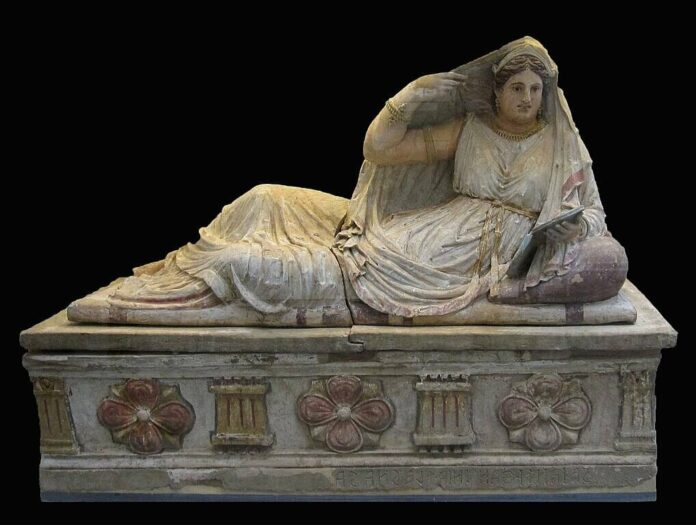A Masterpiece Unearthed
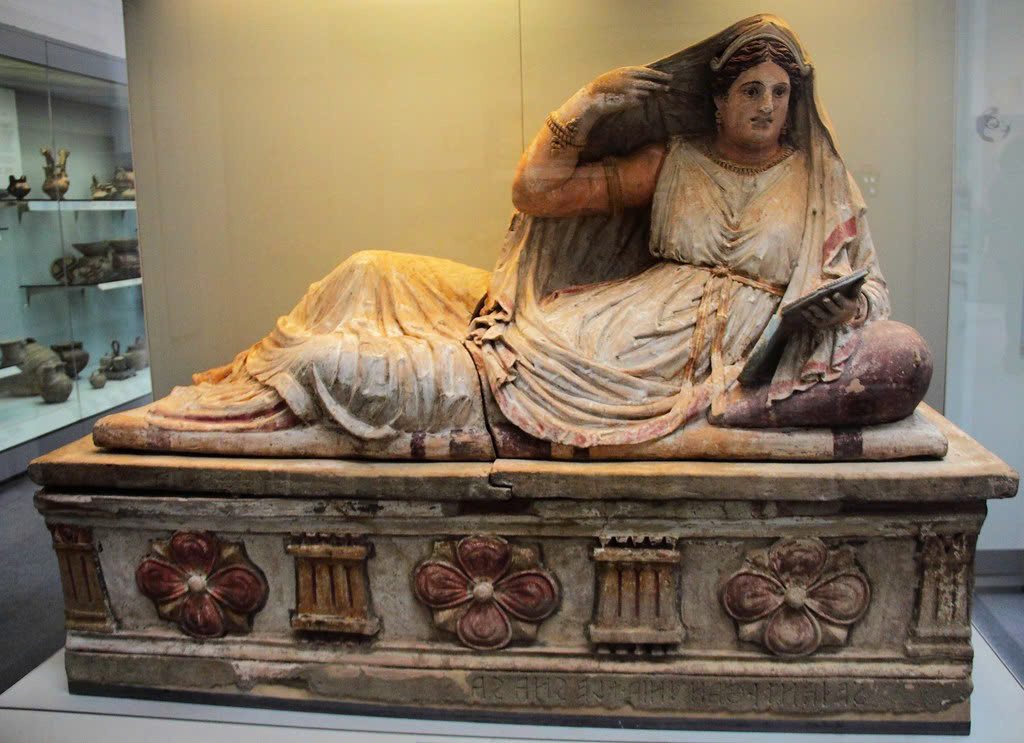
The sarcophagus of Seianti Hanunia Tlesnasa, discovered in the scenic Poggio Cantarello of Tuscany and dating back to 150-140 BC, showcases the remarkable artistry and cultural depth of Etruscan civilization. This striking terracotta piece, now housed in the British Museum, captivates both scholars and visitors with its intricate details and profound symbolism.
The Life of Seianti Hanunia Tlesnasa
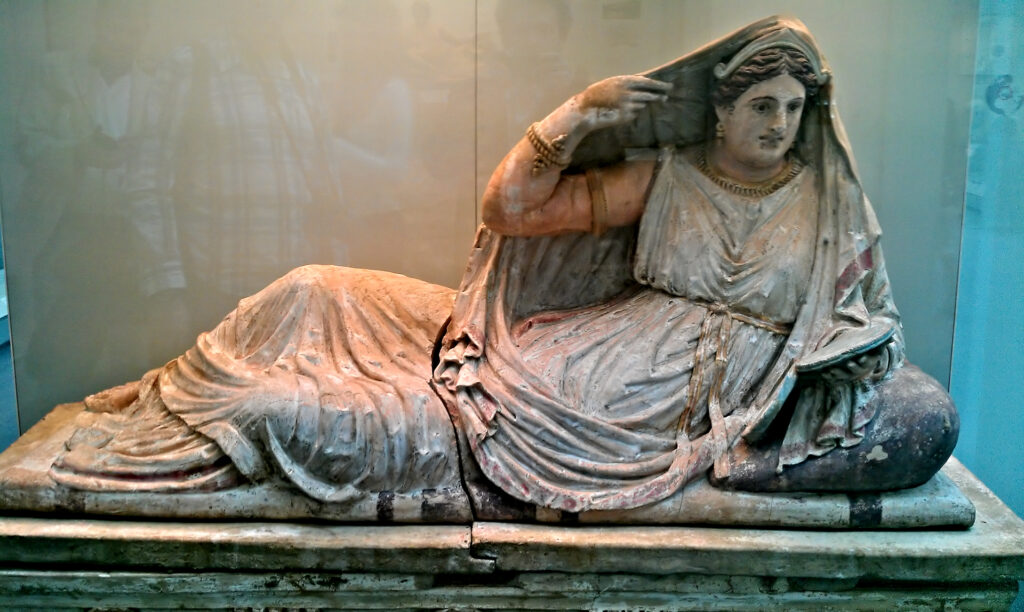
Seianti Hanunia Tlesnasa, whose name is elegantly inscribed in Etruscan script on the sarcophagus, hailed from one of the wealthiest families in Chiusi, a significant Etruscan city. This exquisite sarcophagus not only signifies her elite status but also exemplifies the sophisticated craftsmanship inherent in Etruscan funerary art. The Etruscans placed great importance on the afterlife, striving to honor and remember their deceased, and this sarcophagus embodies such beliefs through its lifelike representation and elaborate adornments.
A Glimpse into Etruscan Life

The sculptural depiction of Seianti shows her reclining gracefully on a shallow mattress, propped by a plush pillow—a position reminiscent of the banquets and leisure scenes commonly found in Etruscan art. This pose conveys a sense of comfort and eternal repose, suggesting that the afterlife was viewed as a continuation of earthly pleasures. She holds an open-lidded mirror, symbolizing femininity and perhaps self-reflection, while her raised hand delicately adjusts her cloak, adding an air of natural movement.
The Elegance of Attire
Seianti’s attire further underscores her high status. She is adorned in an ornate gown and cloak, draped in fluid, sinuous folds that exhibit the exceptional skill of Etruscan artisans in rendering lifelike textiles. Accessories such as a tiara, earrings, bracelets, and a necklace highlight the wealth and fashion of the Etruscan elite.
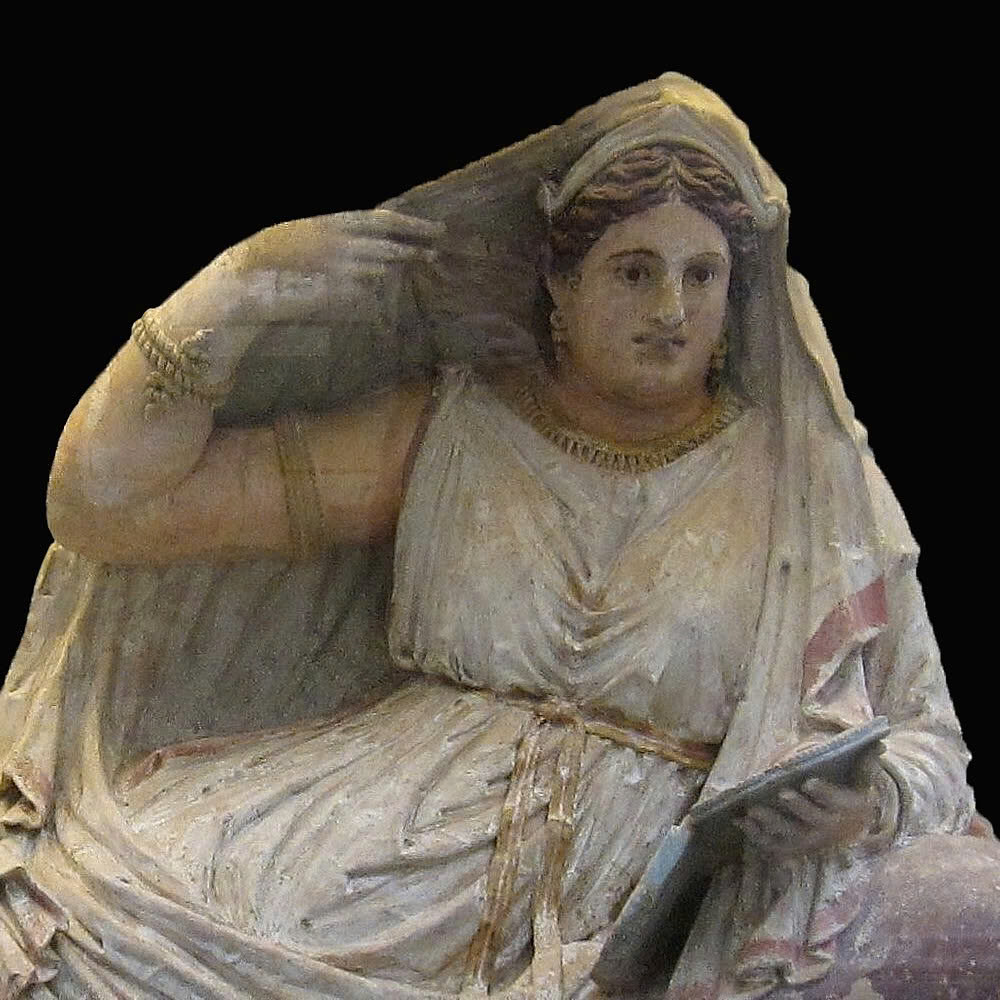
Insights from the Discovery
Inside the sarcophagus, the skeletal remains confirmed that the deceased was a woman aged approximately 50-55 years, indicating that Seianti enjoyed a full life—an impressive feat in an era with shorter life expectancies. This discovery not only represents an artistic achievement but also offers an intimate glimpse into the societal roles and statuses of Etruscan women.
The Legacy of Etruscan Art
Seianti’s sarcophagus exemplifies the profound influence of Etruscan art, which blended Greek and Italic artistic traditions into a unique style that highlighted both technical skill and cultural values. The reclining pose and terracotta use would later inspire Roman funerary practices, as the Romans adopted and adapted these conventions, ensuring the continuation of Etruscan artistic legacy in their monuments.
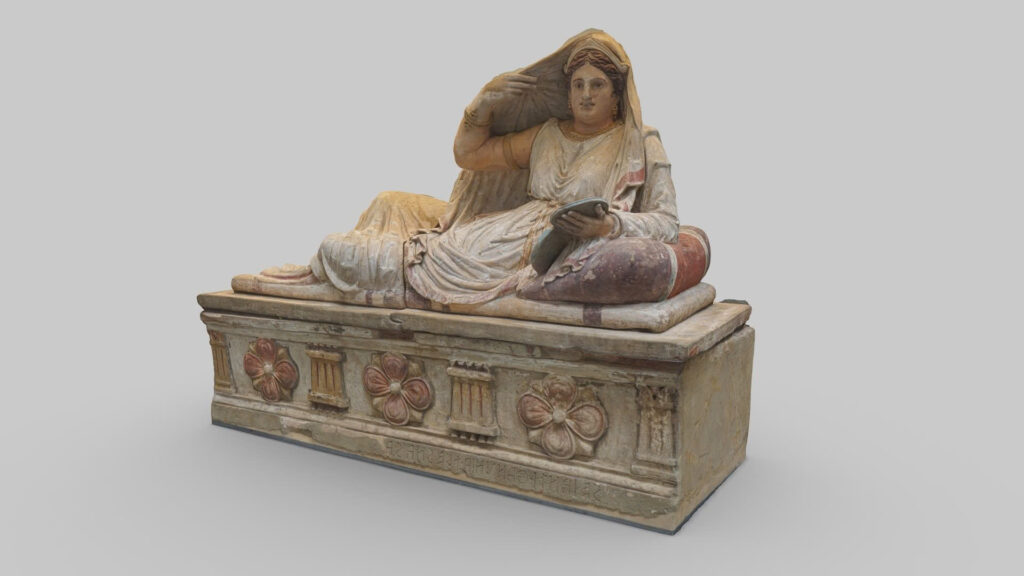
The sarcophagus of Seianti Hanunia Tlesnasa is not merely an exquisite work of art; it is a narrative that reveals the social structures, religious beliefs, and artistic achievements of the Etruscans. Its enduring presence in the British Museum continues to provide valuable insights into the sophisticated society that once thrived in pre-Roman Italy. Through Seianti’s life and image, modern audiences are invited to explore the rich interplay of identity, art, and cultural continuity that defined the Etruscan world.
